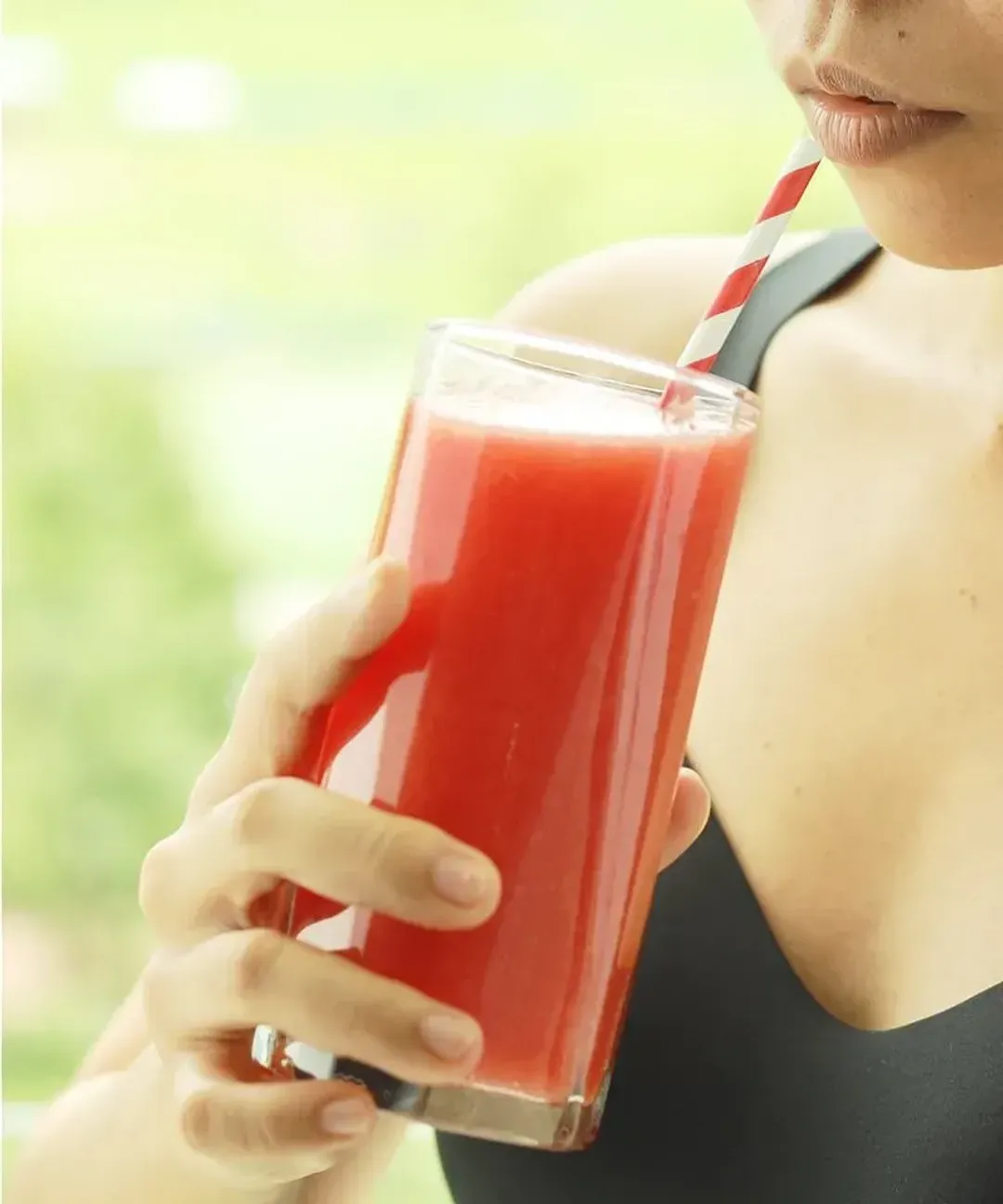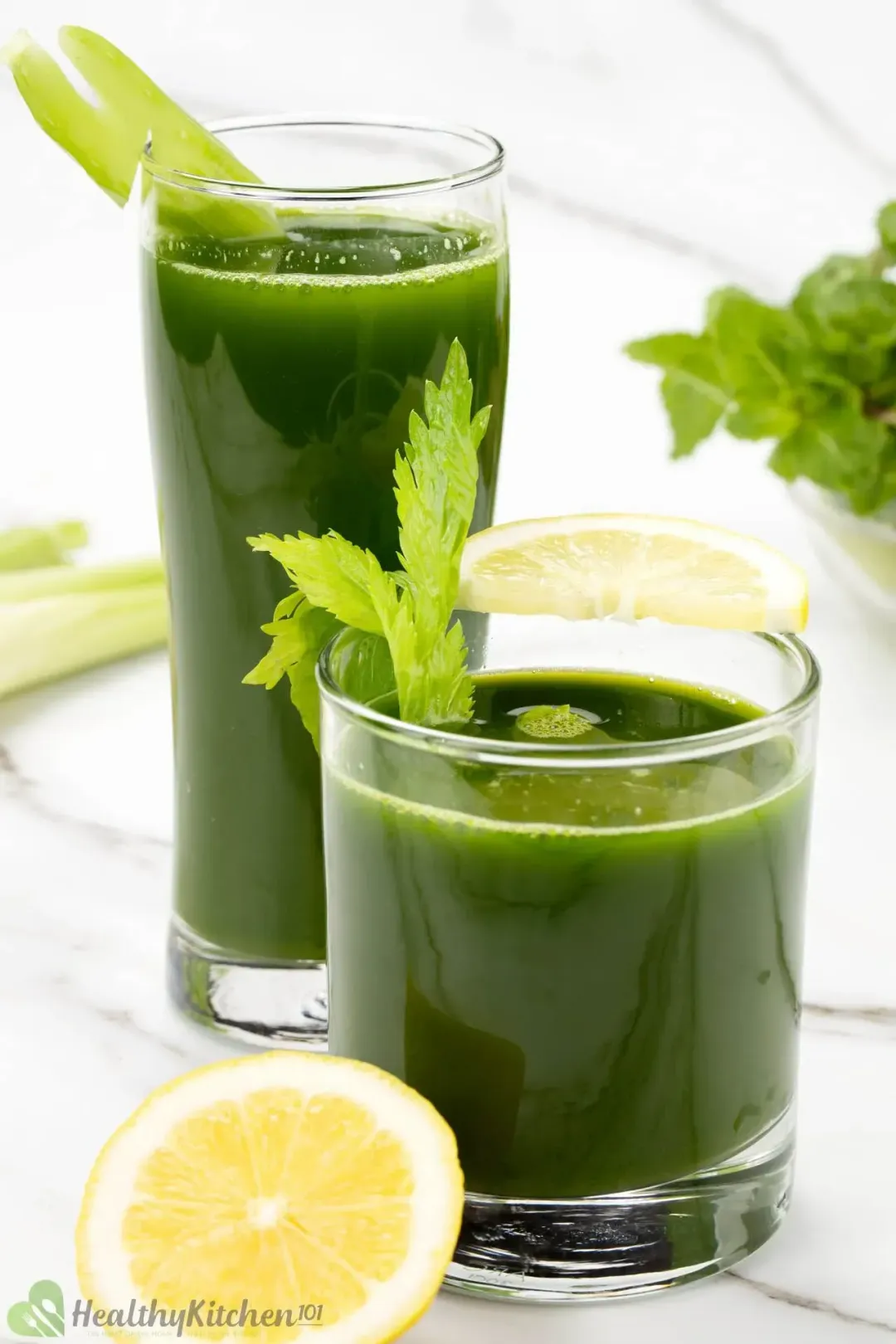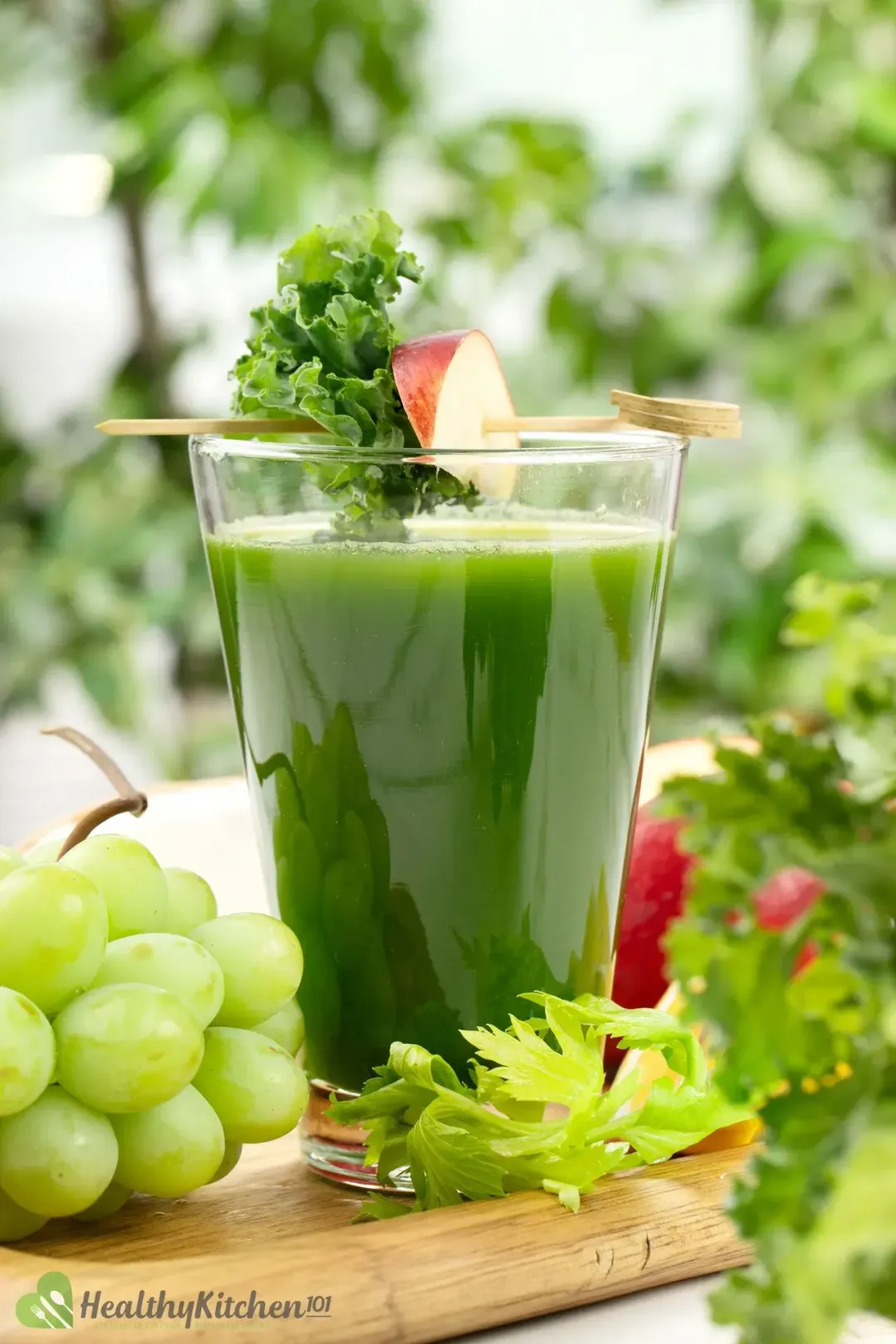Sometimes it’s challenging to follow a regular routine of eating whole vegetables. Maybe you could use a healthy tomato drink as a supplementary source to your diet. Our top 10 tomato juice recipes are healthy and contain numerous vital nutrients.
Read on to learn some health benefits of tomato juice. We’ll examine the nutrition of tomato juice, how it differs from packaged juice, and tips for making great recipes at home.
Top 10 Easy And Delicious Tomato Juice Recipes
Some drinks on this list are alcoholic. And though all beverages are full of nutrients, it’s advised to drink them in moderation.
1. Carrot Tomato Juice
Carrot and tomato are a highly nutritious duo. Drinking carrot juice can speed up your metabolism and support your eye health.
Tomato juice has lycopene to help you fight free radicals that could lead to cancerous cells in your body. And topping this drink with mint gives it an added refreshing element.
Go to Recipe2. Tomato Juice Recipe
This tomato juice recipe adds nuances of spicy, peppery, and herby notes to the fruit’s otherwise sweet-tangy taste. This gives it a sharp, robust edge that beats all those artificial flavorings you’d normally find at the store. What’s more, it’s a healthy, anti-inflammatory beverage that delivers a companionship of sweet acidic essence.
Go to Recipe3. Spicy Tomato Juice
This spicy tomato juice is a vibrant, tangy, and zesty beverage. And we’ll admit, it tastes odd at first, but you’ll quickly warm up to it. It packs heat accompanied by sweet, earthy, and herby aromas that have this drink flowing with warming flavors.
Go to Recipe4. Ginger Tomato Juice
Ginger beer, which is neither alcoholic nor sweet, adds a hint of pungency that makes this a peppy beverage. Together with Worcestershire and Tabasco sauce, it’s a seasoned drink that celebrates the marvelous flavors of tomatoes.
Go to Recipe5. Bell Pepper Tomato Juice
This refreshing bell pepper tomato juice works up your appetite. Not to mention the vitamin C and fiber-packed benefits they bring with each delicious sip. The mix of tangy-acidic flavors is balanced by a small amount of sugar. It’s so easy to prepare, which makes it ideal for large crowds.
Go to Recipe6. Beer and Tomato Juice
This Mexican mix is an energy-boosting drink that combines sweet and bitter flavors to create a zestful beverage. Lime and tomato juice offer vitamin C supplementation while beer, in moderation, may benefit heart health.
Moderate beer consumption (12 ounces/day for women, 24 ounces/day for men) is less likely to have adverse effects. However, it’s good practice to counteract dehydration by drinking plenty of water whenever you consume alcohol.
Go to Recipe7. Vodka and Tomato Juice
This recipe is a spicy drink with hints of sweet notes that tone it down to a smooth accent. The Tabasco sauce and cayenne bring a peppery element balanced by the sweetness of celery, sugar, and tomato juice. It’s an excellent choice for those summer get-togethers, especially if you’re looking for something new to delight the palate.
Go to Recipe8. Bloody Maria
Tequila, tomato juice, Tabasco sauce, and lime juice give this drink a sweet-bitter taste that feels like fire dancing on your tongue (in a good way). This vibrant, spicy beverage makes a great pairing with both simple, clean meals and flavorful, festive Mexican feasts.
Go to Recipe9. Tomato Cocktail
This recipe brings together fresh, vibrant tomato juice with zesty lime juice, tart apples, and funky sweet rum for a festive, flavor-bursting beverage. Tomato juice is the elixir that ties the elements together and makes this a semi-sweet tonic, fit for casual sipping but just as good for BBQs and outdoor parties.
Go to Recipe10. Farmer’s Cocktail
Muddled watermelon chunks and freshly squeezed tomato shaken to a fruity froth with liquor and simple syrup gives you this sophisticated, summery cocktail. Fresh, sweet, and tart with just enough alcohol to keep you buzzing and dancing, it’s the perfect beverage to have at all those sunny parties and carefree loungings.
Go to RecipeHow to Make
Tomatoes are sumptuous when cooked. But they offer another level of versatility in the form of juice. You can make tomato juice in a couple of ways— some extracting more nutrients than others.
1. In a Blender/Juicer
To use a blender, cut the tomatoes, and remove any bad spots. Core and cut the tomato, and add the pieces into the blender. Blend until a puree forms. And there you have it, tomato juice with all its nutritious pulp and seeds.
With a masticating juicer, run the tomato chunks through the juicer funnel and collect the juice in a pitcher. You can sieve it to remove the remaining pulp and seeds or serve it as-is for higher nutritional value.
To avoid a bitter taste, you can add some apple or orange juice and acquire some sweetness. Celery is also a great addition as it lends more fiber and dilutes the tomato flavor. And just a pinch of salt or pepper can alter the flavor profile too. The options are endless!
2. How to Make Stovetop Tomato Juice
Another juicing method involves cooking in a non-reactive pot (the acidity of tomatoes can affect some cookware surfaces).
Simmer your sliced tomatoes with some olive oil, salt, and flavorings of your choosing (celery and onion are excellent choices). After 25 minutes or so, the result is a soupy and thick fusion. Once cooled down, strain your juice through a sieve and allow it to completely cool to room temperature before drinking.
It’s crucial to use a non-reactive pot that's preferably stainless steel. Aluminum pots react to tomato's natural acidity and could add unpleasant chemicals into your juice.

Health Benefits
So what are tomato juice's health benefits? According to healthline.com, it's naturally high in vitamins, minerals, and many other nutrients.
For example, a glass of tomato juice provides 20% of your daily beta-carotene needs, which your body converts into vitamin A. Along with this, you also get magnesium, copper, manganese, and potassium. Tomato juice also contains potent antioxidants— in particular, lycopene. Lycopene is excellent for reducing inflammation caused by free radicals.
Several studies suggest that it has positive effects on cholesterol levels, atherosclerosis, and overall waist circumference. It may also reduce the risk of heart disease and prostate cancer. There’s some preliminary evidence that it fights skin cancer, but human studies on the subject are yet to be completed.
There are other benefits to consider beyond nutrients. Like replacing liquid calories, usually in the form of soda or other highly sweetened beverages, with homemade tomato juice. You can control the amount of sugar and additives in homemade juices and gradually wean yourself off the bad stuff.
Nutrition
- Carbs
Tomatoes are low-carb. A cup of tomato juice contains less than 9 grams of carbs. Roughly 6 grams belong to natural sugars, and the remainder is fiber. Compare that to a cup of soda’s 25.6 grams of high-fructose, corn syrup sugar!
Remember that the total amount of fiber in your juice depends on how finely you strain out the pulp. A pulpier juice will be more nutritious.

- Calories
One cup of tomato juice will net about 47.5 calories. Most of them come from carbohydrates, and more pulp equals more calories. You also get a few protein calories from tomato juice, with a cup containing about 2 grams.
- Potassium
Potassium is one of the many nutrients that make tomatoes beloved by health experts. A single cup of pure tomato juice provides about 16% of your daily need. It’s one of the seven most critical macrominerals that your body needs.
A high-potassium diet helps reduce blood pressure, lowers the risk of stroke, and protects against kidney stones, among other things. Potassium is also critical for regulating electrical signals to your muscles. Potassium deficiency can lead to fatigue, weakness, constipation, and sometimes more severe complications.
- pH level
Tomatoes are acidic fruits. Tomato juice's pH value ranges from 4.1-4.6. That’s more acidic than many vegetable juices, but less than fruits like lemon, grape, and apple.
Some fad diets make a great deal over the acidity of foods. But as long as your liver and kidneys are in good health, the acidity likely won’t affect you. Most acidic fruits and vegetables leave alkaline ash once metabolized. But it certainly won’t change your body chemistry to “acidic” or “alkaline.”
So focus on getting the vital nutrients, and your body will take care of the rest.
Is This Juice Good for You?
Based on the nutrition facts, the answer is a definite yes. However, there are a few things to keep in mind.
If you buy tomato juice at the store, take a look at the nutrition information. Many brands, such as V8 and Campbell’s add a lot of salt into their juice.
But since our modern diets already include large amounts of sodium, packaged juices can be a problem. You could end up consuming a third of your daily recommended allowance of sodium in a single glass— not ideal! Too much sodium can raise your blood pressure and counter the positive effects of potassium.
Some packaged tomato juices also contain added sugar to make them more palatable. And this too, piles on calories. If you buy premade tomato juice, we recommend looking for those with low sodium and sugar content. Homemade tomato juice offers far fewer salt and sugar-related risks.
A general rule with fruits and vegetables is that drinking them in juice form is not as healthy as eating them whole. Extracting juice implies that you’ll leave some of the plant tissue behind, and tossing that aside tosses some benefits too.
FAQ
1. Can You Freeze?
Yes. You can freeze tomato juice for later use.
It may be a good idea to make an oversized batch and store the excess portion. You can drink it over the next few days and even months when frozen.
You can thaw it by placing the container under running water until the juice turns to liquid. Or place it in the refrigerator to defrost.
2. Is This Juice Healthy?
Tomato juice is unequivocally a healthy drink. A cup a day has been proven to lower blood pressure. It may even protect against cardiovascular disease too.
And making it at home allows you to enhance the flavor. Experiment with different fruits and veggies— you can keep it healthy while customizing it to your taste.
3. Is Tomato Juice a Pure Substance?
Tomato juice can be kept pure, especially since you can have it plain when making it at home. Or you can dilute the flavor with sauces, spices, fruits, or vegetables.
With store-bought juices, however, most aren’t pure. Some have added salt, many include vegetables, and most add sugar.
If you’re going for 100% tomato juice with no additives, be sure to inspect the label for ingredients.

Brighten Your Summer Days With These Tomato Juice Recipes
These tomato juice recipes make antioxidant beverages that’ll leave your taste buds tingling and your immune system recharged. If you weren’t a fan before, you surely will after giving them a try.
Ingredients
- Carrot Tomato Juice
- Tomato Juice Recipe
- Spicy Tomato Juice
- Ginger Tomato Juice
- Bell Pepper Tomato Juice
- Beer and Tomato Juice
- Vodka and Tomato Juice
- Bloody Maria
- Tomato Cocktail
- Farmer’s Cocktail
DIRECTIONS
- Choose a recipe that you like.
- Assemble and prepare the ingredients.
- Follow the instructions to create delicious, nutritious beverages in less than 10 minutes.
Neola Muhambi
Writer, SEO SpecialistTuyet Pham
Head Chef, Culinary ConsultantLuna Regina
Writer, Author
- Erica SiebertAwesome, i love beer and tomato juice recipe! Have made it multiple times.

